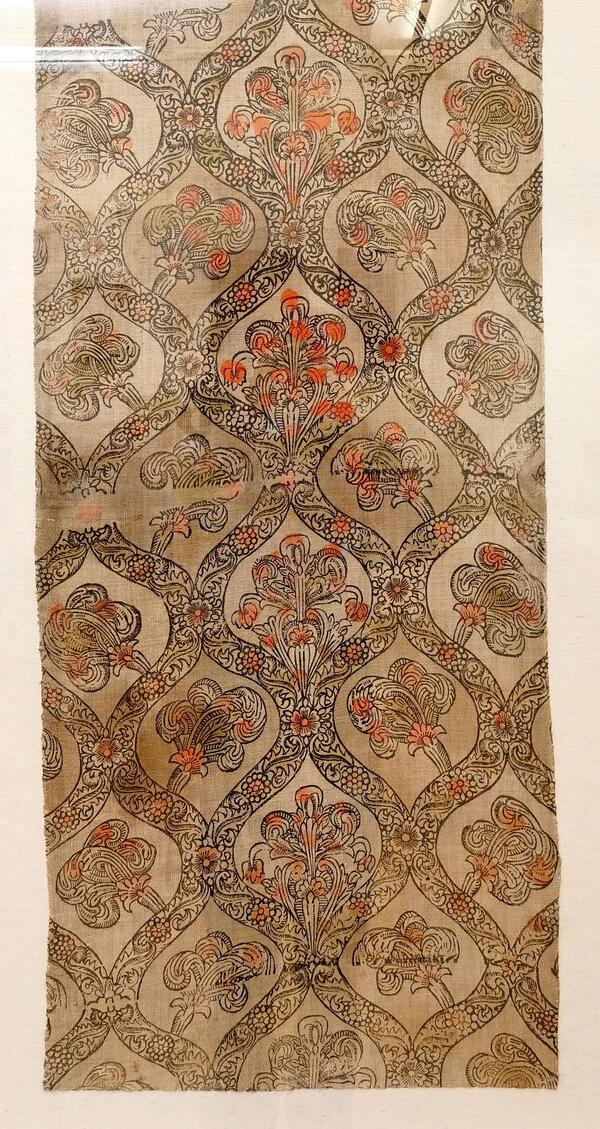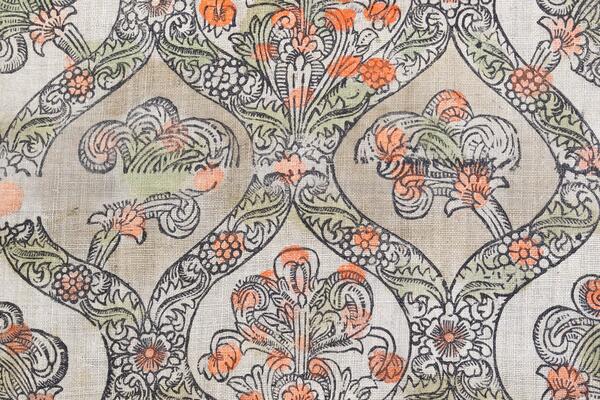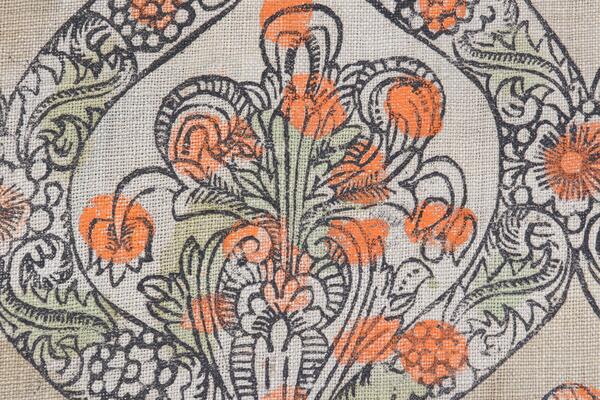The Russian Museum presents a valuable collection of printed fabrics made in Russia from the 17th to the early 19th centuries.
Woodblock printing on textiles appeared in India, where cotton production had existed since ancient times. The ancient Greek historian Strabo mentioned Indian multi-colored printed fabrics in his works. Subsequently, the production of printed fabrics spread throughout Asia and into Africa. In Europe, the first printed fabrics appeared in Italy, later in Germany and in other European countries.
The oldest samples of Russian printed textiles from the collection of the Russian Museum date back to the 16th and 17th centuries. At that time, there was no industrial production of printed fabrics in Russia; even small manufactories did not exist. Woodblock printing took place in small workshops, usually in very small batches or even in a single batch. The fabrics were used to sew liturgical garments, covers for religious books, tents, banners, and other products. Undoubtedly, the first printed fabrics were created with the help of wood carvers who made woodblocks and stamps. Icon painters, who were familiar with the secrets of making dyes, also contributed to the process. Old Russian woodblock printing on fabric involved black oil paint on linen canvas. The pattern was applied to the fabric with the help of woodblocks. In the 16th and 17th centuries, large massive boards, entirely carved from wood without metal parts, were prevalent.
Already in those distant times, printed fabrics imitated expensive foreign textiles or completely copied them. The drawings of Russian 17th-century printed cloth feature elements of patterns typical of Indian, Iranian, and Chinese textiles.
The presented sample of printed fabric imitates expensive Turkish velvets. The artisan reproduced the symmetrical composition typical of Turkish fabrics, a clearly readable large-scale pattern. Images of flowers, leaves and fruits are often found among the designs of Turkish fabrics. From ancient times, Islamic art banned the depiction of people and animals, so Turkish textile artisans focused on developing floral patterns.
Woodblock printing on textiles appeared in India, where cotton production had existed since ancient times. The ancient Greek historian Strabo mentioned Indian multi-colored printed fabrics in his works. Subsequently, the production of printed fabrics spread throughout Asia and into Africa. In Europe, the first printed fabrics appeared in Italy, later in Germany and in other European countries.
The oldest samples of Russian printed textiles from the collection of the Russian Museum date back to the 16th and 17th centuries. At that time, there was no industrial production of printed fabrics in Russia; even small manufactories did not exist. Woodblock printing took place in small workshops, usually in very small batches or even in a single batch. The fabrics were used to sew liturgical garments, covers for religious books, tents, banners, and other products. Undoubtedly, the first printed fabrics were created with the help of wood carvers who made woodblocks and stamps. Icon painters, who were familiar with the secrets of making dyes, also contributed to the process. Old Russian woodblock printing on fabric involved black oil paint on linen canvas. The pattern was applied to the fabric with the help of woodblocks. In the 16th and 17th centuries, large massive boards, entirely carved from wood without metal parts, were prevalent.
Already in those distant times, printed fabrics imitated expensive foreign textiles or completely copied them. The drawings of Russian 17th-century printed cloth feature elements of patterns typical of Indian, Iranian, and Chinese textiles.
The presented sample of printed fabric imitates expensive Turkish velvets. The artisan reproduced the symmetrical composition typical of Turkish fabrics, a clearly readable large-scale pattern. Images of flowers, leaves and fruits are often found among the designs of Turkish fabrics. From ancient times, Islamic art banned the depiction of people and animals, so Turkish textile artisans focused on developing floral patterns.







